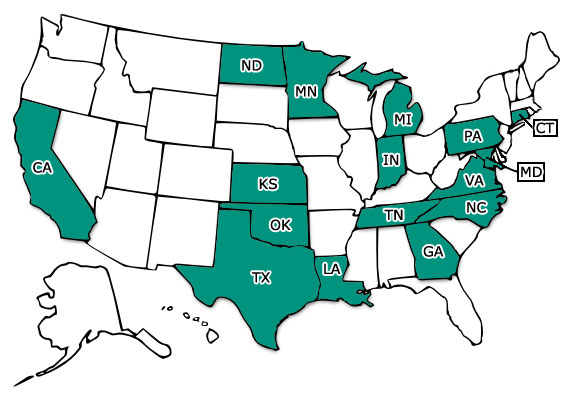Successfully Transitioning from the AA-MAS to the General AssessmentPolicy Directions 22Sheryl Lazarus, Martha Thurlow, Laurene Christensen, and Vitaliy Shyyan February 2014 All rights reserved. Any or all portions of this document may be reproduced and distributed without prior permission, provided the source is cited as: Lazarus, S., Thurlow, M., Christensen, L., & Shyyan, V. (2014). Successfully transitioning from the AA-MAS to the general assessment (Policy Directions 22) Minneapolis, MN: University of Minnesota, National Center on Educational Outcomes. Retrieved [today's date], from the World Wide Web: http://cehd.umn.edu/NCEO/OnlinePubs/Policy22/ IntroductionFederal policy initiatives such as the flexibility waivers for accountability (see box) are requiring that states transition away from the use of an alternate assessment based on modified achievement standards (AA-MAS). It is expected that those students who had participated in that assessment will instead participate in the state's general assessment (or a Race-to-the-Top consortium assessment if the state belongs to one). It is important that this transition be successful. Much has been learned through the development of the AA-MAS and its implementation. These lessons learned form the basis for ensuring the successful transition from the AA-MAS to the general assessment. Indeed, the lessons learned from the AA-MAS provide important information for all states as they strive to ensure that their general assessments are appropriate for a broad range of students.
Figure 1. States with an Alternate Assessment Based on Modified Achievement Standards
Benefits and ChallengesLow-performing students with disabilities can successfully learn the grade-level content when they have access to high-quality instruction. The inclusion of students with disabilities in the new more accessible general assessments will promote high expectations for all students, including students with disabilities. States and districts have an opportunity to think thoughtfully about how to best instruct and assess all students, including low-performing students with disabilities and other struggling learners. The development of an AA-MAS in some states provided the opportunity to learn more about the characteristics of this population of students and how they can best demonstrate their knowledge and skills on accountability assessments. Suggestions for a Successful TransitionStates should consider the following strategies for moving the students currently participating in the AA-MAS to the general assessment: Look at the data to learn more about the students who are currently participating in the AA-MAS. Develop assessments that incorporate the principles of universal design. Develop clear participation guidelines that seamlessly include all students in the assessment system. Consider students' access needs. Ensure that students have access to grade-level content. Provide professional development for educators.
Develop systems that support student achievement. SummaryThe AA-MAS option may be going away, but there still is a population of struggling learners with disabilities who are challenging to instruct and assess. The proposed rollback of the regulation that allowed this assessment option gives states and districts the opportunity to change practices to bring about real change that will improve student outcomes. As these students are transitioned back to the general assessment, states, districts, and schools have another chance to really think about how to best instruct struggling learners. A well-designed transition plan will help facilitate the successful transition of students from the AA-MAS to the general assessment. ResourcesA Principled Approach to Accountability Assessments for Students with Disabilities (Synthesis Report 70). Thurlow, M. L., Quenemoen, R. F., Lazarus, S. S., Moen, R. E., Johnstone, C. J., Liu, K. K., Christensen, L. L., Albus, D. A., & Altman, J. (2008). Minneapolis, MN: University of Minnesota, National Center on Educational Outcomes. http://www.cehd.umn.edu/nceo/OnlinePubs/Synthesis70/Synthesis70.pdf ESEA Flexibility. U.S. Department of Education (2013). Washington DC: Office of Elementary and Secondary Education. ESEA Flexibility: Frequently Asked Questions. U.S. Department of Education (2012, August 3). Washington, D.C.: Author. http://www2.ed.gov/policy/eseaflex/esea-flexibility-faqs.doc Leading the Transition from the Alternate Assessment Based on Modified Achievement Standards (AA-MAS) to the General Assessment. Lazarus, S. S. & Rieke, R. (2013). Journal of Special Education Leadership, 26(1). Lessons Learned in Federally Funded Projects That Can Improve the Instruction and Assessment of Low Performing Students with Disabilities. Thurlow, M. L., Lazarus, S. S., & Bechard, S. (Eds.) (2013). Minneapolis, MN: University of Minnesota, National Center on Educational Outcomes. http://www.cehd.umn.edu/NCEO/OnlinePubs/LessonsLearned .pdf Moving Your Numbers Website with Tools and Resources. Minneapolis, MN: University of Minnesota, National Center on Educational Outcomes. http://movingyournumbers.org States' Flexibility Plans for Phasing out the Alternate Assessment Based on Modified Academic Achievement Standards (AA-MAS) by 2014-15 (Synthesis Report 89). Lazarus, S. S., Thurlow, M. L., & Edwards, L. M. (2013). Minneapolis, MN: University of Minnesota, National Center on Educational Outcomes. http://www.cehd.umn.edu/nceo/OnlinePubs/Synthesis89/SynthesisReport89 .pdf |
